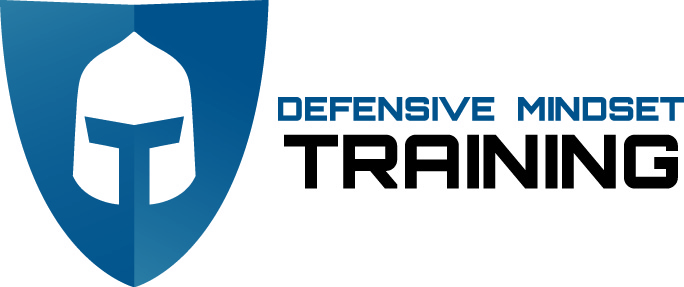Considering recent events here in the Twin Cities, I think it's critical that we review something we cover in our SMT Permit to Carry course.
Last week, Minnesota police officer Geronimo Yanez was acquitted of manslaughter charges in the death of legal permit to carry holder, Philando Castile. This was a terrible and unfortunate situation in which there were no winners. It’s also a very rare example of a confrontation between Law Enforcement and an otherwise lawfully armed citizen. It's an example of why continued training for citizens with firearms is important, especially in how they communicate with Law Enforcement Officers in a traffic stop. And for Law Enforcement Officers, it's an example of why they need more and deeper training. I’ve long been an advocate that more LEOs should spend more time with law abiding concealed carry holders to increase communication and comfort levels.
I think that we, as Citizen Defenders, have a heavy responsibility to be the primary defense for ourselves and our loved ones. Our responsibility to be the first responder, meeting a crisis with focus and calm. And we must remember we're in a society governed by the rule of law and our current social contract.
The Law Enforcement Officer rarely comes into contact with the law abiding gun owner. There's a reason for that: Law abiding gun owners are just that, LAW ABIDING. When the two groups do come together, there's a bit of a rift. You see, there's a certain amount of training that every person looking to carry a police badge must go through. That foundational training is what LEOs must rely on every time they are confronted with a dangerous situation. To become an officer in the state of Minnesota, trainees spend 100 to 200 hours on defensive applications, half of which is firearms-based.
Law abiding concealed carry holders generally have significantly less training. Many police will admit (though not openly) that their own training is insufficient for the potential dangers of the job. Given that feeling, how do you think they view your Permit to Carry training?
At SMT, we're working quite a few levels above that average law abiding Permit to Carry holder, with the average SMT student getting 75 to 100 hours of firearms training PER YEAR. But even with all of that training, mistakes can be made.
So for this Training Newsletter, let's review the SMT method for communicating with Law Enforcement in a traffic stop.
For the Citizen, the traffic stop is an annoyance. You may have been driving a little over the speed limit, or didn't come to a complete stop, but you're not out there trying to cause mayhem. There's a good chance that you're going to get a ticket, and that the stop will happen at the "worst possible time," like when you're late for a meeting.
But for the Law Enforcement Officer, the traffic stop is the most likely place to be killed or injured. According to the Force Science Institute: "According to FBI Law Enforcement Officers Killed and Assaulted reports, 62 officers were killed during traffic stops from 2003 to 2012. That does not include 34 others who died during and after vehicle pursuits. Most involved shootouts.... In 2012, 4,450 officers were wounded or assaulted in various manners during traffic stops."
This means every time the officer gets out of the vehicle for a traffic stop, they are at 100% Focused Awareness, and on edge. It's our responsibility as Citizen Defenders to help dial back that edge as much as possible. Here's what you do:
- When the lights go on, turn on your four-way hazard lights and look for the safest place to pull over - safest for the officer, that is.
- Turn on the lights inside the vehicle so that you and the inside of the vehicle can be clearly seen.
- Turn off the radio and turn off the car, but leave the power on for your AC/Heat and to run the windows. Then put your hands back on the steering wheel at 10 and 2.
- If your windows are up, do not roll them down. Wait for the officer to come along side the vehicle, and definitely do not get out of the car. The officer would not like to have a friendly chat with you on the side of the road.
- Once the officer is beside the car, wait for their signal to roll down the window. Do so slowly and smoothly.
- Then before anything else is said, you say the following: "Officer, my name is ...... I'm a legal permit to carry holder and I have my equipment with me. For your safety and mine, how would you like to proceed?"
Most likely, the officer will say, "Oh, okay, thanks for letting me know. Where is it?" You should tell them clearly, of course. They will next most likely say, "Don't touch it." Pretty clear, right? So don't touch it.
Next will come the usual parts of the traffic stop: "License and registration." (If these are near your defensive equipment, make sure you tell the officer that and ask permission to retrieve them. Do so slowly and carefully.), "Do you know how fast you were going?" or "Where are you trying to get to so fast?" or "Did you know your headlight was out?" - etc.
If for some reason the officer asks you to get out of the vehicle, do so slowly and try to repeat back to the officer what they are telling you. Officer: "Please step out of the vehicle." You: "I am stepping out of the vehicle."
Remember that if you did nothing wrong and are charged or fined, lots of attorneys in the US would love to take your case. So, don't argue with the officer. Slow down, dial back the stress levels for both of you, and the traffic stop will go just fine.

